Even if you love lifting, training consistently can be a challenge. Fluctuations in sleep levels, work stress, relationship dynamics, your mood, your mental health — everything affects your workouts and your desire to train. And for many people, menstruation also impacts their workout. Figuring out how to feel secure about that programmed squat session while you’re bleeding can be uncomfortable, to say the least.
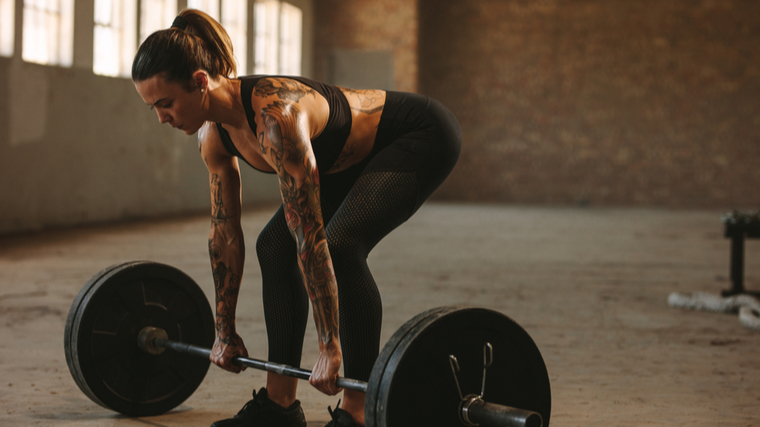
But it’s not just menstruation itself that might have an impact on your strength goals. The hormonal fluctuations your body experiences throughout the month before and after your actual period can also influence your training. But being aware of where you are in your cycle and what’s going on in your body, and how it might impact your energy in the gym, can help you figure out how to plan the best workout for yourself.
How Does Your Menstrual Cycle Work?
Dealing with menstruation during exercise can be annoying. It can cause fluctuations in your energy, mood, and your performance. Different phases of your menstrual cycle can affect workouts in different ways.
Part of programming your workouts around your menstrual cycle is knowing what’s up with your body throughout the month. Different hormone levels can impact you and your strength training differently because of these cycles, even when you’re receiving hormone replacement therapy (HRT). To break down the cycle, it’s helpful to take it back to health class.
Premenstrual (End of Luteal Phase)
A week or two before menstruation begins, people may experience premenstrual syndrome (PMS). The effects can be relatively mild, but studies suggest that between five to eight percent of people who menstruate experience severe PMS. (1) You might experience symptoms such as cramps, mood changes, fatigue, and food cravings.
Menstruation
This is where the thickened lining of the uterus, known as the endometrium, is shed and bleeding occurs. This part of the cycle lasts between three and seven days. The first day you start to bleed is considered the first day of the cycle.
Menstrual cramps negatively impact the physical and emotional quality of life of at least 93 percent of people who menstruate. (2)(3) These cramps are often so intense that the pain is comparable to having a heart attack, Quartz reports. And when menstruating people experience them over a large part of their lives, their pain empathy for others can bring them to experience vivid pain themselves when witnessing other people suffering. (4) That kind of pain can impact everything about your training — from gym motivation to your basic abilities to move — so it’s certainly something to be mindful of when planning out your program.
Follicular Phase
The longest phase of the menstrual cycle is the follicular phase, which on average lasts around 16 days. It begins on the first day of menstruation. The initial part of the follicular phase is associated with lower levels of estrogen and progesterone, and these two hormones can affect insulin activity.
Studies suggest that during the first part of the follicular phase, insulin sensitivity may be higher, which can positively impact the way your body uses energy. (5) Higher insulin sensitivity can help cells use blood glucose (your body’s main source of energy) more effectively. Working out hardest during this phase may be your best bet.
Luteal Phase
Ovulation is what splits your follicular phase from the next phase, which is your luteal phase. This phase lasts until the next time you bleed. That means that the last part of the luteal phase encompasses any potential PMS symptoms you might have.
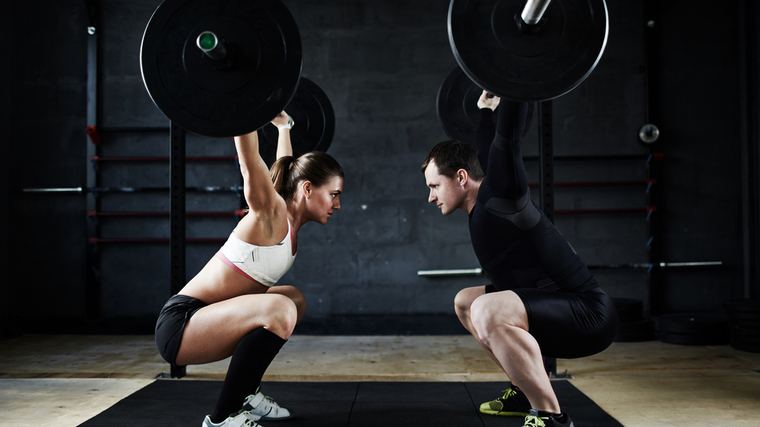
In this phase, estrogen and progesterone levels are higher, and some studies suggest that muscular performance may be higher during this time. (6) Hormonal changes during this phase are often associated with fatigue, hunger, and irritability, which might tempt you to skip your workouts. But since working out can sometimes help you feel less bloated, keeping it active during the luteal phase might be soothing.
How to Program Strength Training Around Your Period
If you’re a person who menstruates, you might be pretty familiar with your own limitations and strengths throughout each month. Perhaps when squats are scheduled and you are bleeding heavily, you know you’d rather switch to leg presses for a less dynamic lower body move. But figuring out how to maximize your training during your cycle can be quite the challenge.
Working Out a Week Before Your Period
Depending on the severity, any of these symptoms can affect your daily routine — including exercise. Studies suggest that aerobic exercise can help balance levels of estrogen and progesterone, which may help reduce symptoms of PMS. (7)
During the premenstrual phase, productivity and motivation may be lower due to a reduction of estrogen and serotonin levels. This can make it difficult to have a successful workout or even have the desire to get to the gym. Although medications such as contraceptives or antidepressants can be prescribed, they might be associated with fatigue, nausea, or potential risks to pregnancy. (8)
Working Out During Your Period
During the initial part of this phase, progesterone and estrogen levels are at their lowest, and it may cause more fatigue. Hormone levels start to increase as menstruation goes on. In terms of working out, the immense pain a lot of people experience from cramping and the actual bleeding can be huge barriers to their workout.
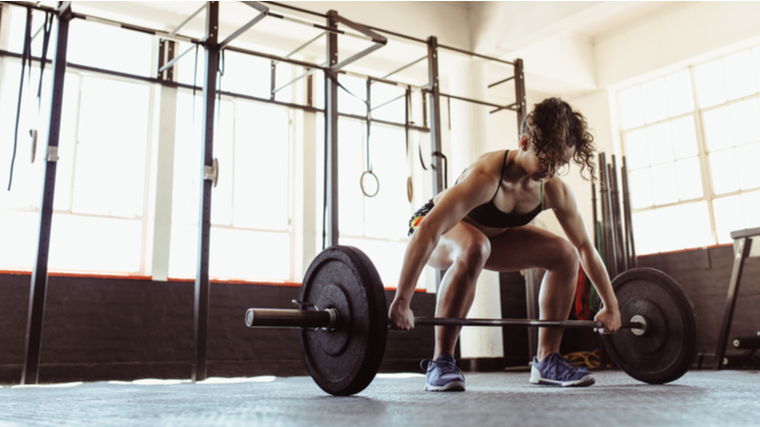
Yoga has been shown to help alleviate the intense pain of menstrual cramps. This might be especially true if you’re accustomed to practicing yoga (for example, going to a class once a week). (9)(10) If yoga isn’t your thing, low-intensity stretching, core work, or high-intensity aerobics for 45 to 60 minutes three times a week can also help alleviate some cramping pain. (11)
Working Out the Week After Your Period
During the follicular phase, research suggests that muscles may be susceptible to more damage than training generally causes. So you might consider lower training loads or longer recovery periods. (12) However, during the first part of the follicular phase, your insulin sensitivity may be higher. (5) Because you’ll be able to process glucose (energy) more efficiently, you may want to take advantage and go harder in the gym. Listen to your body’s cues to find your balance.
Working Out Two Weeks After Your Period
In the luteal phase, your body’s basal temperature is often higher. Remember that this cycle loops back around to include any PMS symptoms you may experience, which can account for the sense of being overheated that many people experience. Therefore, you may find it more difficult to perform at your highest level of intensity at this phase because a higher body temperature can make you feel more strained or decrease your physical performance, especially in hot conditions. (13) Running outside on a hot day or hopping in a hot yoga class may not be the most ideal during this time.
Higher hormones may have you feeling more fatigued, but they can also potentially affect your performance and increase the risk of injury. Although estrogen can help improve muscle strength, it can decrease connective tissue stiffness. That might negatively impact performance and can increase the risk of a ligament injury. (14)(15)
How Might Your Period Affect Your Workouts?
The immense pain that can accompany monthly bleeding — not to mention the emotions that might surround it, including gender dysphoria for many people — can negatively impact one’s quality of life. It’s natural that all of that can impact your training, too.
For Strength
You can get strong and build muscle no matter where you are in your cycle — period. If you’re training consistently, you’ll be able to continue getting stronger. (16) Even during the first two weeks of your cycle — when you might be experiencing the most mood impacts, physical discomfort, and painful cramps — you can strength train without detrimental impacts on hormone levels or bone mineral density. (17)
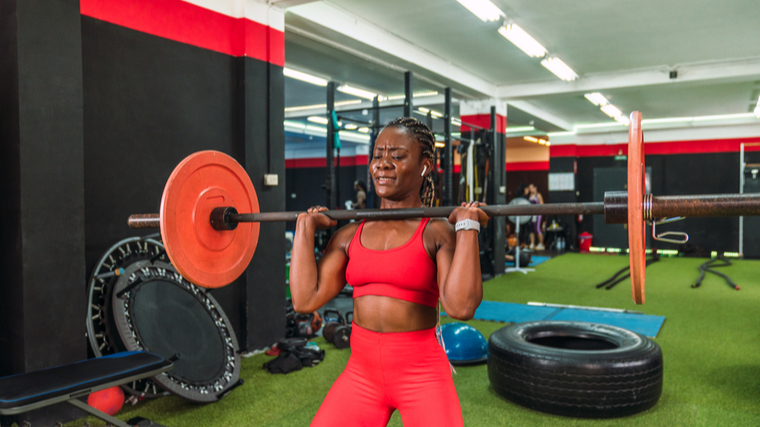
During those first two weeks, you might even be able to make more increases in lower body strength and power compared to the last two weeks. (18)
For Hypertrophy
Although it might seem that the accumulated fatigue and pain of your menstrual cycle would prevent strength and muscle gains, research suggests otherwise. (16) You can build muscle very effectively throughout your cycle, but perhaps especially during the first two weeks. (18) So don’t be afraid to go hard to let out some emotions before your period (and even while you’re bleeding).
For Endurance
As your menstrual cycle moves through the follicular phase, estrogen levels generally increase. This starts on day one of bleeding and lasting about 16 days after. Research suggests that muscles may be more susceptible to damage during this phase, so lower training loads or longer recovery periods may be considered. (12)
However, higher estrogen levels — which you may experience around this time — can lead to increased muscular endurance, allowing you to hit your muscle groups harder and more often. (19) So, as with every period of your cycle, it’s really all about figuring out what works best for your own body.
Sample Workouts For Before, During, and After Your Period
Maybe you’re feeling a little unmotivated, or you just need some guidance on where to start during your period. Either way, check out some sample workouts for before, during, and after your period.
Before Your Period
Here, research suggests that you might want to go harder with lower body workouts. (18) When you’re planning out your program, you might want to perform your heaviest leg workouts during the beginning of the month.
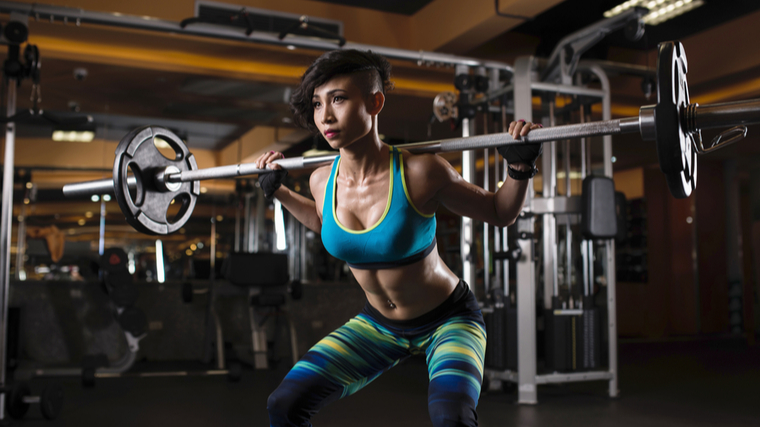
Perhaps plan squats before your period if squatting while bleeding is uncomfortable for you. Deadlifts and leg presses might be more comfortable once you actually start bleeding, because your lower body isn’t physically moving around as much. Leg extensions can replace walking lunges once you start bleeding, for similar reasons.
- Low Bar Back Squat*: 5 x 3
- Front Squat**: 3 x 5
- Dumbbell Romanian Deadlift: 3 x 8
- Walking Lunges***: 3 x 8 per side
- *Replace with Deadlift, depending on your body’s needs
- **Replace with Leg Press, depending on your body’s needs
- ***Replace with Leg Extension, depending on your body’s needs
During Your Period
Yoga is known to help soothe period cramps, especially when you already have a regular practice. (9)(10) So, while you’re bleeding and potentially in a lot of discomfort and pain, yoga might be a good option for your workouts.
That doesn’t mean that you can’t lift heavy during your period. If your program calls for lower body work that you absolutely don’t want to postpone, consider making modifications to make it more comfortable. For example, deadlifting heavy instead of squatting heavy might be a lot more comfortable for you.
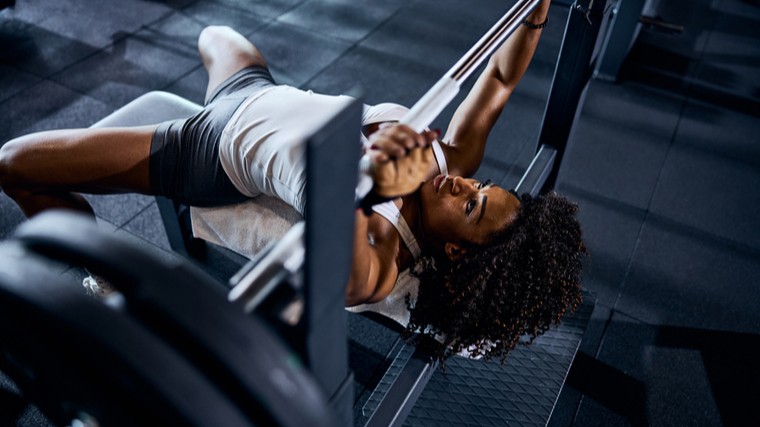
[Read More: The Best Upper Body Exercises and Workouts]
Otherwise, consider focusing more on your upper body while you’re bleeding so that your lower body can remain static if that feels better for you. If you opt for core work, you might also want to choose options that will keep your lower body still.
- Band Pull-Apart: 3 x 15
- Overhead Press OR Bench Press: 3 x 5
- Face Pull: 3 x 12
- Cable Triceps Extension: 3 x 15
- Cable Biceps Curl: 3 x 12
- Rear Delt Lateral Raise: 3 x 10
OR
- 45-minute Yoga Session
OR
- Full Plank: 45 seconds
- Side Plank (Left): 30 seconds
- Forearm Plank: 45 seconds
- Side Plank (Right): 30 seconds
- Repeat circuit three to five times. Rest 90 seconds between circuits.
After Your Period
Everyone reacts to their hormone levels differently, but the heightened levels you experience during your luteal phase may not feel great. This might be especially true if you tend to feel warmer during the week and a half or so leading up to bleeding again.
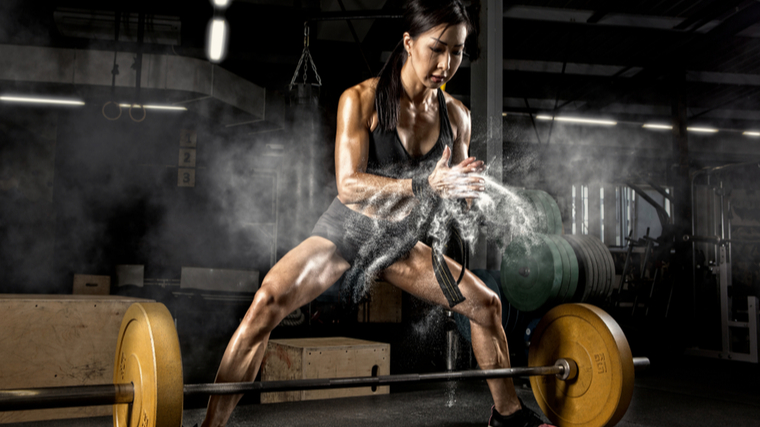
If that’s the case, make extra sure that you’re well-hydrated and hopefully working out in a gym with access to air conditioning.
- Deadlift: 3 x 5
- Dumbbell Bent-Over Row: 3 x 8
- Lateral Lunge: 3 x 8 per side
- Prone Dumbbell Row: 3 x 10
- Kettlebell Dead Bug Pullover: 3 x 15 per side
Final Thoughts
Everyone’s body is different. When you’re going through your menstrual cycle, remember that exercise science can offer you good guidelines: but you’re the only expert on your body. If you’ve found a rhythm that works for you, by all means, get after it.
Learning your body is often a system of trial and error, and things aren’t always consistent from month-to-month. But if you’re at a loss for what your body is doing throughout your menstrual cycle and want to use it to maximize your gains, periodizing your training with your period can be a super helpful strategy.
References
- Yonkers, K. A., O’Brien, P. M., & Eriksson, E. (2008). Premenstrual syndrome. Lancet (London, England), 371(9619), 1200–1210.
- Bernardi, M., Lazzeri, L., Perelli, F., Reis, F. M., & Petraglia, F. (2017). Dysmenorrhea and related disorders. F1000Research, 6, 1645.
- Iacovides S, Avidon I, Bentley A, Baker FC. Reduced quality of life when experiencing menstrual pain in women with primary dysmenorrhea. Acta Obstet Gynecol Scand. 2014 Feb;93(2):213-7.
- Mu J, Wang Q, Dun W, Yang J, Wang K, Zhang M, Liu J. The effects of long-term menstrual pain on pain empathy in women with primary dysmenorrhea. Pain. 2021 Jul 1;162(7):2051-2059.
- D’Eon T, Braun B. The roles of estrogen and progesterone in regulating carbohydrate and fat utilization at rest and during exercise. J Womens Health Gend Based Med. 2002 Apr;11(3):225-37.
- McNulty, K. L., Elliott-Sale, K. J., Dolan, E., Swinton, P. A., Ansdell, P., Goodall, S., Thomas, K., & Hicks, K. M. (2020). The Effects of Menstrual Cycle Phase on Exercise Performance in Eumenorrheic Women: A Systematic Review and Meta-Analysis. Sports medicine (Auckland, N.Z.), 50(10), 1813–1827.
- Samadi, Z., Taghian, F., & Valiani, M. (2013). The effects of 8 weeks of regular aerobic exercise on the symptoms of premenstrual syndrome in non-athlete girls. Iranian journal of nursing and midwifery research, 18(1), 14–19.
- Pearce, E., Jolly, K., Jones, L. L., Matthewman, G., Zanganeh, M., & Daley, A. (2020). Exercise for premenstrual syndrome: a systematic review and meta-analysis of randomised controlled trials. BJGP open, 4(3), bjgpopen20X101032.
- Yang NY, Kim SD. Effects of a Yoga Program on Menstrual Cramps and Menstrual Distress in Undergraduate Students with Primary Dysmenorrhea: A Single-Blind, Randomized Controlled Trial. J Altern Complement Med. 2016 Sep;22(9):732-8.
- Kim SD. Yoga for menstrual pain in primary dysmenorrhea: A meta-analysis of randomized controlled trials. Complement Ther Clin Pract. 2019 Aug;36:94-99.
- Armour M, Ee CC, Naidoo D, Ayati Z, Chalmers KJ, Steel KA, de Manincor MJ, Delshad E. Exercise for dysmenorrhoea. Cochrane Database Syst Rev. 2019 Sep 20;9(9):CD004142.
- Romero-Parra N, Cupeiro R, Alfaro-Magallanes VM, Rael B, Rubio-Arias JÁ, Peinado AB, Benito PJ; IronFEMME Study Group. Exercise-Induced Muscle Damage During the Menstrual Cycle: A Systematic Review and Meta-Analysis. J Strength Cond Res. 2021 Feb 1;35(2):549-561.
- Rocha-Rodrigues S, Sousa M, Lourenço Reis P, Leão C, Cardoso-Marinho B, Massada M, Afonso J. Bidirectional Interactions between the Menstrual Cycle, Exercise Training, and Macronutrient Intake in Women: A Review. Nutrients. 2021 Jan 29;13(2):438.
- Lowe, D. A., Baltgalvis, K. A., & Greising, S. M. (2010). Mechanisms behind estrogen’s beneficial effect on muscle strength in females. Exercise and sport sciences reviews, 38(2), 61–67.
- Chidi-Ogbolu, N., & Baar, K. (2019). Effect of Estrogen on Musculoskeletal Performance and Injury Risk. Frontiers in physiology, 9, 1834.
- Sakamaki-Sunaga M, Min S, Kamemoto K, Okamoto T. Effects of Menstrual Phase-Dependent Resistance Training Frequency on Muscular Hypertrophy and Strength. J Strength Cond Res. 2016 Jun;30(6):1727-34.
- Wikström-Frisén L, Boraxbekk CJ, Henriksson-Larsén K. Increasing training load without risking the female athlete triad: menstrual cycle based periodized training may be an answer? J Sports Med Phys Fitness. 2017 Nov;57(11):1519-1525.
- Wikström-Frisén L, Boraxbekk CJ, Henriksson-Larsén K. Effects on power, strength and lean body mass of menstrual/oral contraceptive cycle based resistance training. J Sports Med Phys Fitness. 2017 Jan-Feb;57(1-2):43-52.
- Consitt LA, Copeland JL, Tremblay MS. Endogenous anabolic hormone responses to endurance versus resistance exercise and training in women. Sports Med. 2002;32(1):1-22.
Featured Image: Jacob Lund / Shutterstock